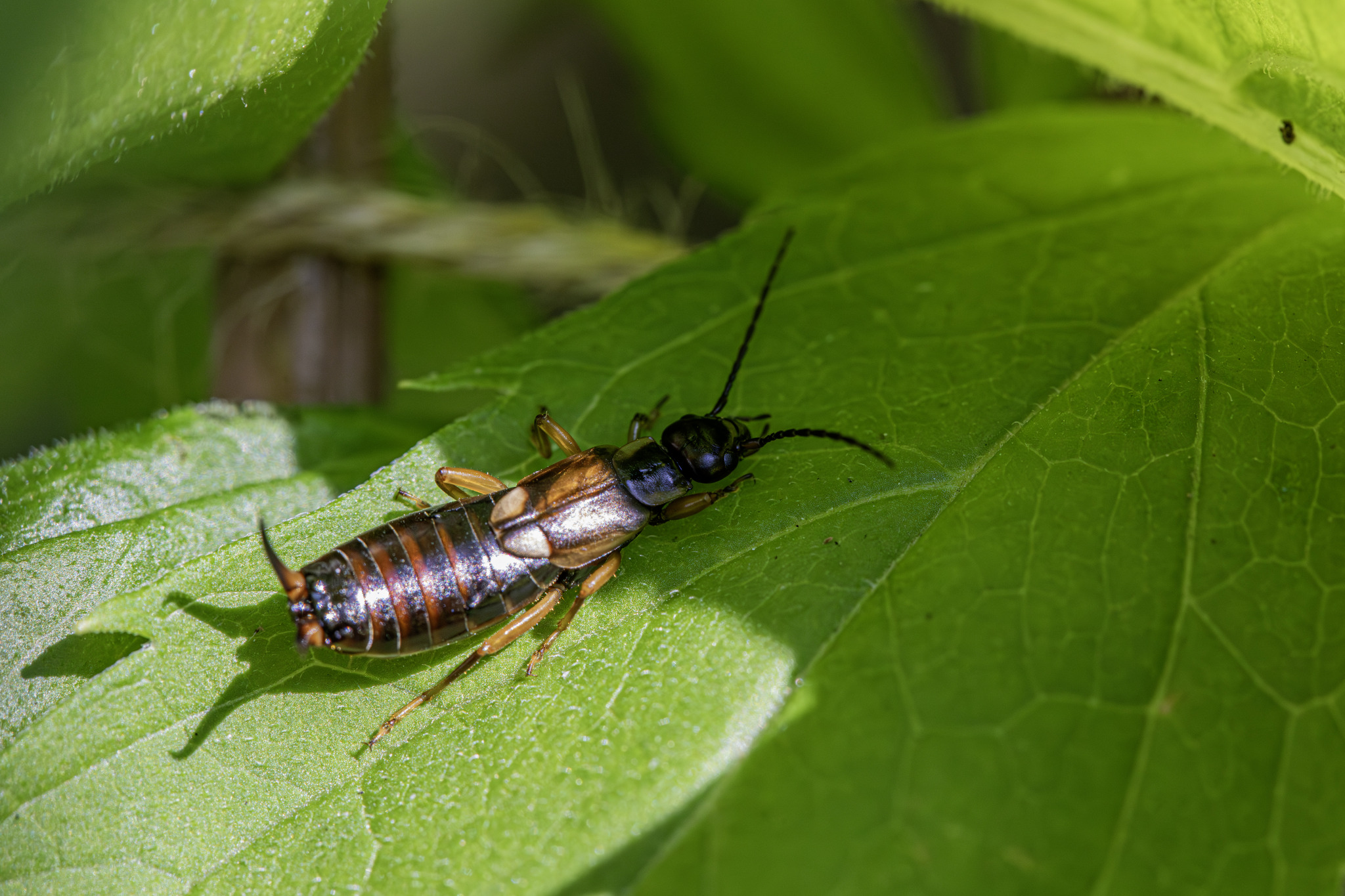The European earwig (Forficula auricularia) is an interesting and often misunderstood insect known for its distinctive pincers and nocturnal habits. Belonging to the family Forficulidae, this earwig species is widely distributed across Europe and has also been introduced to other regions.
Physical Description
- Size: The European earwig is a medium-sized insect, measuring approximately 10 to 15 mm (0.4 to 0.6 inches) in length.
- Body: Its body is elongated and flattened, with a reddish-brown or dark brown coloration.
- Wings: While it has wings, they are rarely used for flight. The forewings are short and leathery, while the hindwings are membranous and can be folded under the forewings.
- Pincers: One of the most distinctive features of the European earwig is its pair of cerci, which are the pincers located at the rear end of the abdomen. In males, these pincers are curved and more prominent, whereas, in females, they are straighter and less pronounced. These pincers are used for defense, capturing prey, and mating.
Distribution and Habitat
The European earwig is native to Europe but has spread to other parts of the world, including North America, where it is now common. It prefers a variety of habitats, including:
- Gardens: Often found under mulch, leaves, and garden debris.
- Woodlands: Prefers moist, shaded areas where it can find shelter.
- Human Structures: Can sometimes be found indoors, especially in damp conditions.
Behavior and Diet
- Nocturnal: European earwigs are primarily nocturnal, meaning they are most active during the night. During the day, they seek shelter in dark, damp places.
- Diet: They are omnivorous and feed on a wide range of materials, including decaying organic matter, plant material, and small insects. In gardens, they can sometimes cause damage to plants, particularly soft fruit and vegetables.
Reproduction and Lifecycle
- Mating: Mating typically occurs in late summer. During this time, males and females engage in a mating dance, using their pincers to grasp and manipulate each other.
- Eggs and Nymphs: The female lays eggs in a nest, often in soil or under debris. After hatching, the nymphs resemble miniature adults but are smaller and lack fully developed wings. They go through several molts before reaching adulthood.
Myths and Facts
- Misconceptions: The European earwig has often been the subject of myths and misconceptions. Contrary to popular belief, earwigs do not enter human ears. The name “earwig” is derived from an old English word meaning “ear insect,” but there is no evidence that they have any such behavior.
- Bites: While their pincers can pinch if handled roughly, they are not harmful to humans and do not carry diseases. The pinch is generally not painful and is used more for defense and handling prey.
Importance in Ecosystems
- Decomposition: Earwigs play a role in the decomposition of organic matter, contributing to soil health and nutrient recycling.
- Pest Control: They help control populations of other small insects and pests, though they can sometimes become pests themselves in gardens and homes.
Summary
The European earwig (Forficula auricularia) is a fascinating insect with distinctive pincers and a nocturnal lifestyle. Although often misunderstood and sometimes viewed as pests, they play important ecological roles in decomposition and pest control. Proper knowledge of their behavior and habits can help mitigate any potential issues they may cause in gardens or homes.
Views: 3057
Subscribe to the newsletter:
